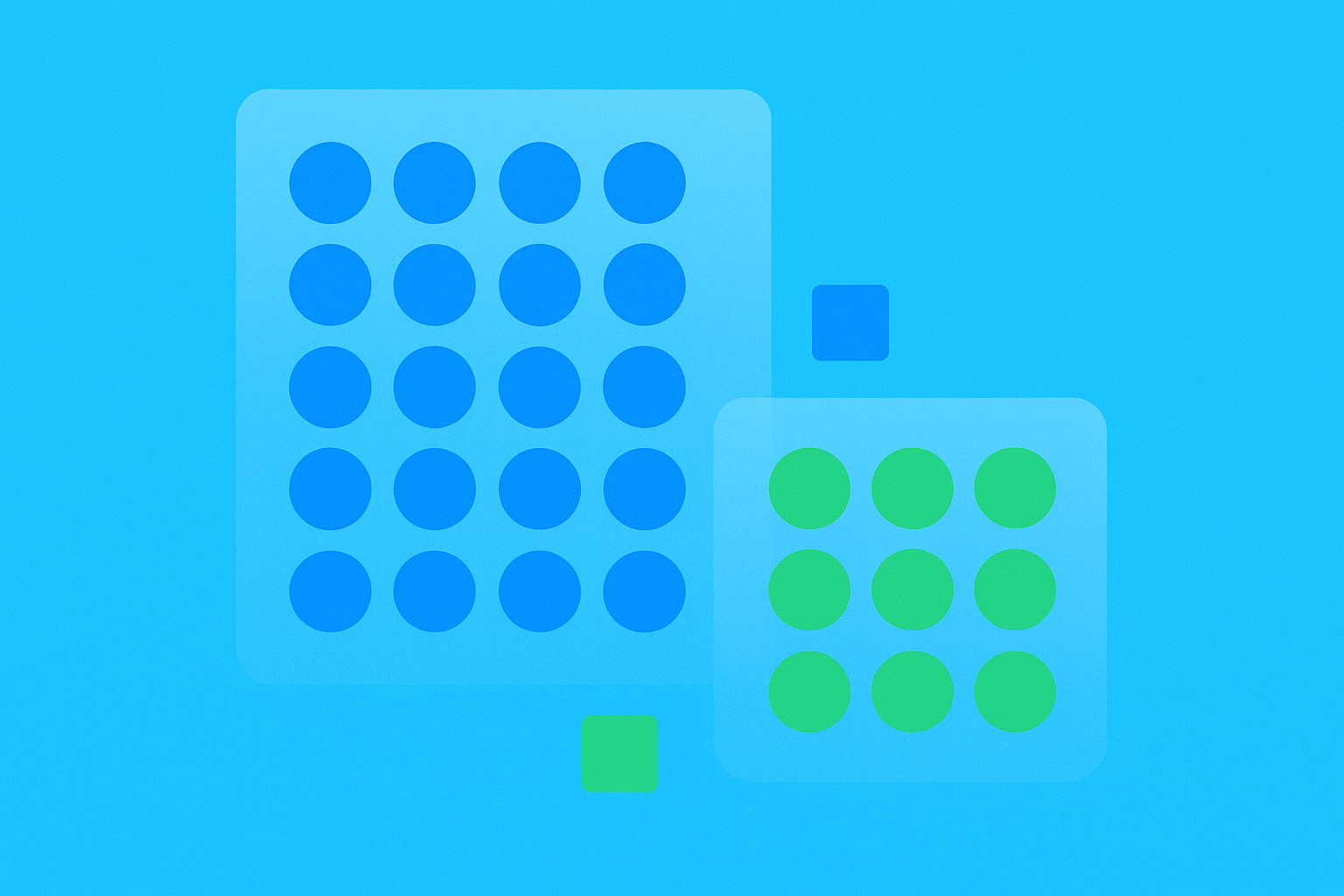Kaspa (KAS) nedir ve GhostDAG protokolü nasıl çalışır?


Kaspa: GHOSTDAG protokolüyle çalışan, 2,48 milyar dolar piyasa değerine sahip bir PoW blockchain
Kaspa, proof-of-work tabanlı ve GHOSTDAG protokolünü kullanan yapısıyla blokzincir dünyasında çığır açan bir yenilik sunar. Klasik blokzincirlerin paralel blokları reddetmesine karşın, GHOSTDAG bu blokların bir arada var olmasını ve konsensüsle sıralanmasını sağlar; böylece bir blok DAG (Yönlendirilmiş Döngüsüz Grafik) altyapısı oluşur. Bu mimari, Kaspa'nın proof-of-work güvenliğinden ödün vermeden ölçeklenebilirliğini artırır.
Proje, 2025 yılı itibarıyla 2,48 milyar dolarlık piyasa değeriyle dikkat çekici bir performans sergiliyor ve kripto para ekosisteminde öne çıkan bir oyuncu konumunda bulunuyor. Kaspa'nın teknik özellikleri yenilikçi yaklaşımını ortaya koyuyor:
| Özellik | Kaspa | Geleneksel Blokzincirler |
|---|---|---|
| Protokol | GHOSTDAG BlockDAG | Lineer zincir |
| Konsensüs | Proof-of-Work | Çeşitli |
| Blok Üretimi | 10 blok/saniye | Genellikle birkaç dakikada 1 blok |
| Ölçeklenebilirlik Hedefi | 100 blok/saniye | Blok boyutu ve zamanla sınırlı |
Mayıs 2025’te uygulanan “Crescendo” hard fork, Kaspa’nın blok üretimini saniyede 1’den 10’a çıkardı ve işlem hacmini önemli ölçüde artırdı. Bu gelişme, Kaspa’yı blokzincir üçlemini çözebilecek potansiyel bir çözüm haline getiriyor ve proof-of-work sistemlerinin merkeziyetsizlikten veya güvenlikten ödün vermeden ölçeklenebileceğini ortaya koyuyor; bu, sektörün en temel problemlerinden biriydi.
KAS token: Ön madencilik yok, %100 madencilikle üretildi, %77 dolaşımda
Kaspa (KAS), kripto para piyasasında şeffaf ve adil tokenomik modeliyle öne çıkar. Birçok projede olduğu gibi geliştiricilere, yatırımcılara veya fonlara önceden token tahsis edilmek yerine Kaspa, hiçbir ön madencilik yapılmadan, tamamen adil dağıtım modeliyle piyasaya sürülmüştür. Bu sayede tokenlerin tamamı madencilik faaliyetleriyle oluşturulmuş ve katılımcılara eşit şartlar sunulmuştur.
Token arzı ile ilgili metrikler KAS dağıtımına dair önemli veriler sunuyor:
| Arz Metriği | Değer | Yüzde |
|---|---|---|
| Maksimum Arz | 28,7 milyar | %100 |
| Mevcut Dolaşımdaki Arz | ~26,8 milyar | %77 |
| Kalan Madencilik Potansiyeli | ~1,9 milyar | %23 |
Bu veriler, KAS tokenlerinin dörtte üçünün madencilik yoluyla üretildiğini ve dolaşımda olduğunu gösteriyor. Kalan %23’lük kısım ise önceden belirlenmiş emisyon takvimine göre aşamalı olarak madencilik ödülleriyle piyasaya girecek. Bu azlık faktörü, projenin gelişimiyle birlikte token ekonomisini doğrudan etkileyebilir.
Adil lansman sayesinde, toplulukta destekçi sayısı hızla artıyor; bugün sahip hesap sayısı 547.000’i geçti. Gate kullanıcıları KAS’a platformun alım-satım hizmetleriyle erişebilir ve token, son zamanlardaki fiyat dalgalanmalarına rağmen yüksek piyasa hareketliliği gösteriyor. Topluluk merkezli bu dağıtım modeli, Kaspa'nın yenilikçi GHOSTDAG protokolüne dayalı merkeziyetsiz ekosistem vizyonuyla birebir örtüşüyor.
Temel zorluklar: Benimsenme ve olası merkezileşme riskleri
KAS’ın hızlı işlem imkânı sunan GHOSTDAG protokolüne rağmen, ağ 2025’te önemli benimsenme engelleriyle karşı karşıya. Kullanıcıların ağa katılması hâlâ oldukça karmaşık ve geliştirici araçlarının azlığı ekosistemin büyümesini engelliyor. Zayıf ortaklık stratejileri ise potansiyel kullanıcılar için entegrasyonun önünü tıkıyor ve teknolojinin tek başına ilerlemesine neden oluyor.
Merkezileşme endişeleri KAS için kritik bir başka alan olarak öne çıkıyor. Veriler, ağın merkeziyetsizlik durumu hakkında dikkat çekici göstergeler sunuyor:
| Merkezileşme Risk Faktörü | Mevcut Durum | Etkisi |
|---|---|---|
| Madencilik Gücü Dağılımı | %68’i 5 kurumun kontrolünde | %51 saldırısı riski |
| Düğüm Dağılımı | %74’ü 3 ülkede yoğunlaşmış | Düzenleyici risk |
| Yönetim Kontrolü | 9 kurum kritik oy hakkına sahip | Karar alma darboğazları |
KAS, kendine özgü konsensüs mekanizmaları sayesinde bazı kripto paralara göre daha merkeziyetsiz yapıda olsa da, mevcut verilerde merkezileşme eğilimlerinin arttığı görülüyor. Gate’in analizine göre müdahale yapılmazsa KAS’ın güvenliği ve temel değer önerisi zayıflayabilir. Ekim-Kasım 2025’de fiyatın 0,09 dolardan 0,04 dolara gerilemesi, yapısal sorunlara dair piyasa endişelerini gösteriyor ve ağ kontrolünün daha geniş dağıtılması ile yönetim reformlarının aciliyetini vurguluyor.
Sıkça Sorulan Sorular
KAS coin nedir?
KAS coin, BlockDAG altyapısı ve GHOSTDAG protokolüyle neredeyse anında işlem sunan Kaspa kripto parasıdır. Saniyede bir blok işleyip on bloğa ölçeklenmeyi hedeflerken proof-of-work güvenliğini korur.
Kaspa 10 dolara ulaşabilir mi?
Evet, Kaspa teorik olarak 2030’a kadar 10 dolara ulaşabilir. Şu anda yaklaşık 0,11 dolardan işlem görse de, büyük borsa listelenmeleri olmaksızın gösterdiği güçlü büyüme uzun vadeli büyük bir potansiyel sunuyor.
Kaspa'nın geleceği var mı?
Evet, Kaspa aktif geliştirme süreciyle gelecek vaat ediyor ve uzun vadeli fiyat tahminleri 2050'de yüksek seviyelere işaret ediyor.
Melania Trump'ın coin'i nedir?
Melania Trump’ın coini $MELANIA adını taşır. Kripto para piyasasında bir meme coin olarak piyasaya sürülmüştür.

Pi Network Mining Bitiş Tarihi: Madencilerin 2025'te Bilmesi Gerekenler

PI nedir: Evrenimizi Şekillendiren Matematiksel Sabit

KAS nedir: Modern kriptografi alanında Anahtar Anlaşma Şemasının temelini anlamak

Kazılabilir Bir Kripto Para Nasıl Oluşturulur: Adım Adım Kılavuz

ERG nedir: Çalışan Kaynak Gruplarını ve İş Yeri Kültürüne Etkilerini Anlamak

Pi Network'in Geleceği: 2025'te Temellerinin Kapsamlı Bir Analizi

XDB ve BAT: Dağıtık Veritabanı Çözümleri ile Geleneksel Büyük Teknoloji Altyapısının Kapsamlı Karşılaştırması

2023 yılında kripto para dünyasına yeni adım atanlar için en uygun platform hangisidir?

Bitcoin Fiyat Tahmini: 2025 Sonrası Görünüm

Web 3.0'u Anlamak: Merkeziyetsiz İnternet Evriminin Yeni Dönemi

2024 Meme Coin Fiyat Tahmini: STARS Yeni listelemelerle hızlı bir yükseliş gösteriyor







